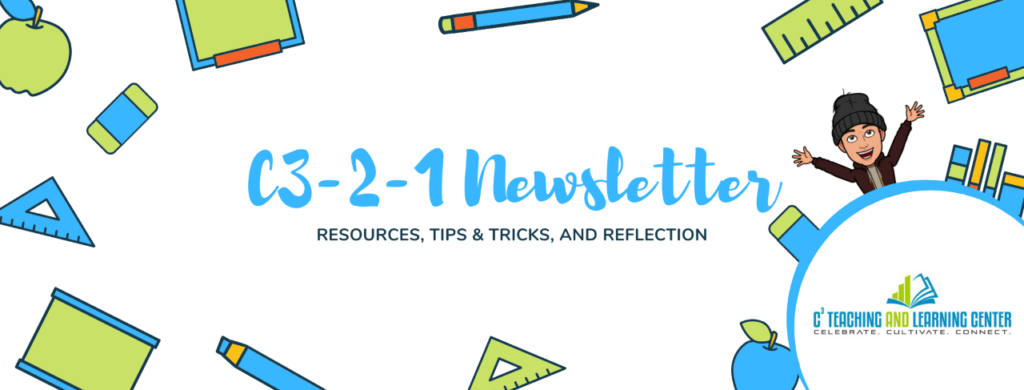C3-2-1 Newsletter – Week Ten! (Election Edition)
Hello, Faculty Community!
***You are receiving this newsletter because you are a faculty member at MiraCosta College. I, Sean Davis, am the coordinator of our C3 Teaching and Learning Center***
This edition of the C3-2-1 Newsletter is coming to you a few days early because Election Day is just over a week away, and our resource suggestions focus on our roles, as educators, in the serious business of political participation. We all have a responsibility to engage in ways we can. We can also help our students engage in the process regardless of if they can vote or not.
3 resources related to teaching and learning, 2 online tips and tricks, and 1 question for reflection
Looking for archived resources, tips/tricks, and questions?
Revisit the past editions of the C3-2-1 Newsletter here.
Want to share?
If you have some resources, tips/tricks, and questions to share, please contribute to the newsletter using this C3-2-1 Form.

(3) Resources
- Campus Election Engagement Project (CEEP)
Do you want to discuss the upcoming election in your class but struggle with how to facilitate the conversation? This resource provides strategies, tips, and conversation starters, including their Campus Civic Discussions: A Non-Partisan Guide. We know these discussions can seem challenging. Hopefully, this resource and others can give us what we need to be prepared and willing to bring the topic to our students. - 76 things You Can Do To Boost Civic Engagement – Brookings Institution
This resource gives us 76 ideas for staying informed, voting, other forms of participation, and a call to action for us all as we prepare to make decisions on policies that will impact how we operate locally and nationally.
***We must remember that not all of our students and colleagues can cast a ballot. Being sensitive to this reality is crucial to creating inclusive working and learning environments*** - General Election Voter Guide – KPBS
What was that prop about again? Who is that city council candidate? There are so many important items on the ballot, and keeping up with all of them can feel like taking a class, and the final exam is next Tuesday! Of the election guides I have reviewed, I found this one to be fair and comprehensive. Check it out to get clarity beyond all of those text messages, TV commercials, and leaflets cluttering up our mailboxes.
(2) Online Tips and Tricks
- View Recent Page View History in Canvas
This tip comes from our Instructional Technologist, Karen Turpin. Thanks, Karen!
You may have noticed a new item in the Canvas Universal Navigation Menu. The clock icon on the menu is your gateway to your recent page view history within the learning management system. This menu item may be useful as you are managing several classes while working in Canvas. Here is a brief description of this tool from the Canvas Community site:
As an instructor, you can view a list of your recent Canvas course page views from the History link in Global Navigation. The Recent History list displays page view history within the most recent three weeks. - Allowing Students to Create Discussions in Canvas
Are you looking for ways to diversify the kinds of discussion you have in class? One way to accomplish this is by allowing students to engage with the course content by creating their own discussion board based on the material. Here is a blurb on how to use this feature in Canvas:
You can allow students to create a new discussion by changing the settings from the Discussions page. When this setting is enabled, discussions created by students become part of the course and are included in future course copies and exports unless the discussions are deleted.
(1) Question
What are the potential consequences of claiming neutrality in a clearly critical juncture in contemporary history?
Stay joyful,
Sean Davis
Joyful Teacher in Residence
Coordinator, C3 Teaching and Learning Center

